Best budget bike locks: Lower-priced locks for bicycles
Our pick of the best budget bike locks that offer high levels of protection and great usability despite their cheaper prices
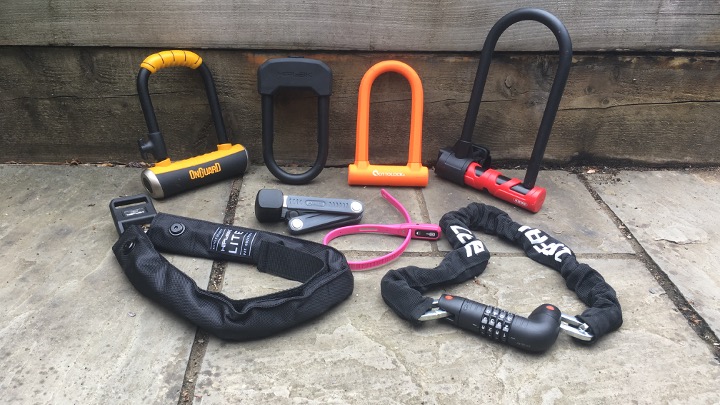
Searching for the best budget bike locks is a balance between three main factors: cost, security and usability. There is no point in buying a lock that is hard to crack but can't be practically used on your bike in the circumstances you want to secure it.
The good news is that you don't have to spend hundreds of pounds to lock up your bike securely. We set ourselves a budget of around £50 / $60 and found plenty of options to recommend. However, if you can't find what you are looking for in this article and are happy to consider spending a bit more, you might want to check out our guides to the best bike locks or the best lightweight bike locks.
Locks come in all shapes and sizes but fall broadly into three groups: D-locks (also known as U-locks), chain locks, and cable locks. Cable locks tend to be very easy to cut through with basic tools, and while we have included a couple in this guide it should be clear that we recommend them only as an auxiliary to a stronger, solid lock, or if you are using it to keep your bike locked in a more secure location, such as a secure office bike store.
The majority of the best budget bike locks we tested are D-locks, which are a great option for cyclists because the design allows for a single shackle to be made as thick as possible to deter cutting with tools. A chain lock is made of many interlocking links that tend to be thinner to keep the weight down – and are therefore more easily cut. We have included some chain locks in this guide, however, as many people find them more versatile than D-locks which can sometimes be difficult to get in the right position when securing your bike to certain fixed objects. If you are unsure, we have an explainer on which is the best option for keeping your bike safe.
We have included a variety of options to suit the different needs of different riders. We have tested all the locks in real-life scenarios, taking them out to see how practical they are while being transported and when locking up a bike in various situations. This test doesn't include trying to break the locks open, as we have relied on the certification of qualified testing organisations.
If you still need guidance, we have included a Q&A on how to choose the best budget bike lock for you at the end of the article.
Quick list
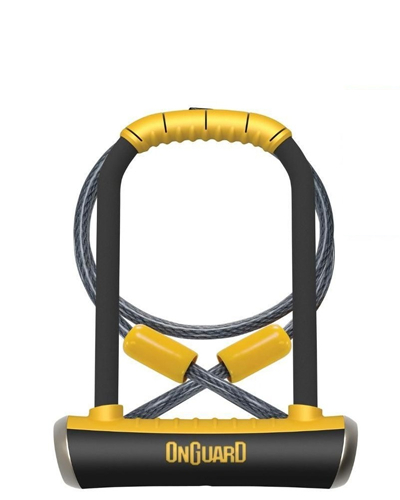
Onguard's small factor D-lock is accompanied by a cable, so you can secure your wheels despite its small size. It's Sold Secure diamond rated and the small size makes for easier carrying.

The Decathlon Elops 900 M D-lock has a sold secure silver rating and for the money is a really good option if you want a decent D lock that won't cost the earth.
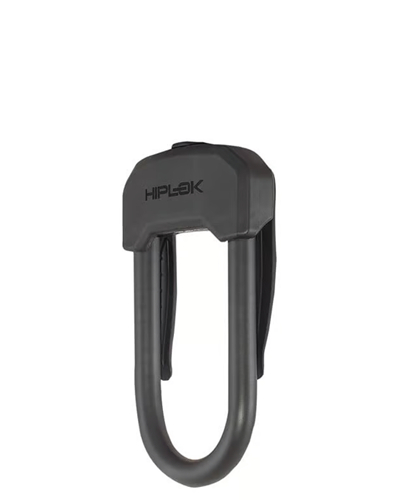
Hiplok concentrates on its locks' usability. The D weighs under a kilo and comes with a built-in clip to attach it to a bag or belt when not in use.
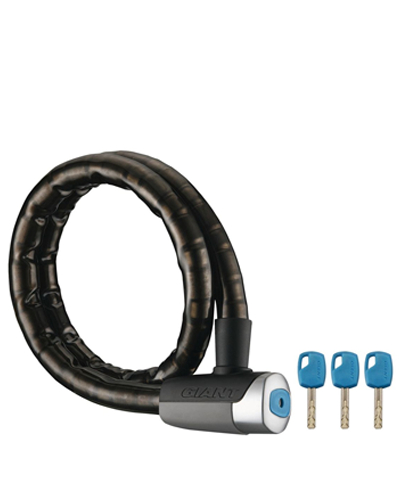
Giant uses its heft to bring you a 25mm thick cable lock with quality features at a more affordable price, although the lock has not been assessed by Sold Secure.
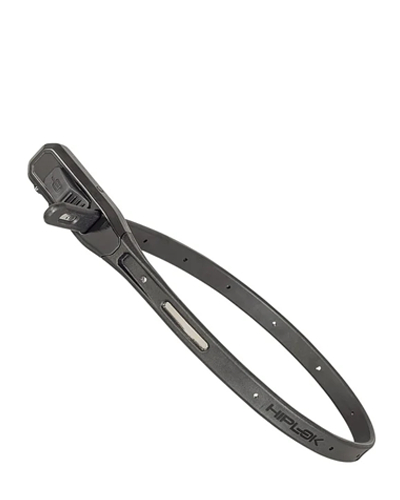
The Hiplok Z Lok won't keep a determined thief away for long but as a deterrent on short stops, it's very lightweight and easily carried.
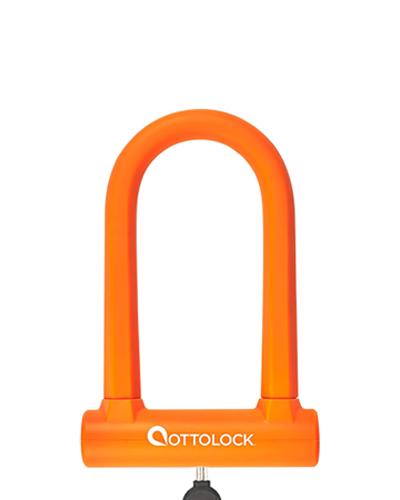
The Ottolock Sidekick weighs just 768g, making it a lightweight choice if you want a D-lock. The downside is no Sold Secure rating though.
Best budget bike locks available today
D-Locks
The most protection
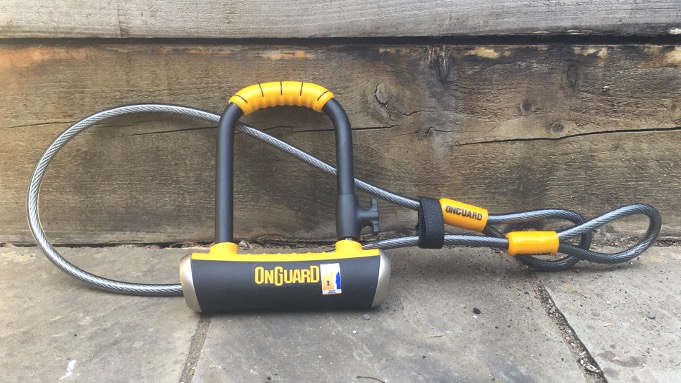
1. OnGuard Pitbull Mini DT 8008
Specifications
Reasons to buy
Reasons to avoid
✅ You want the best protection at a low price
✅ You want easy packability
❌ You want a larger locking area
❌ You don't want to carry too much weight
There really is little to fault on the OnGuard Pitbull Mini DT. We even found the supposed drawback – that it is a smaller D-lock – to have benefits on the usability front, making it easy to operate and store on the bike.
The protection this lock offers is staggering given it retails at less than £50 (although only just). It is the only lock in this guide to be awarded Sold Secure's diamond rating – the highest the testing and certification service offers. Although the locking area of the D-lock is small, we found it ample for securing a bike frame to a post, railing or rack while using the cable that comes with it to secure the wheels.
The Quattro Bolt locking mechanism secures the shackle to the crossbar in four places to increase protection against pulling, jacking, prying and twisting attacks, and the shackle itself is 14mm thick – the thickest in this round-up along with the Zefal K-Traz – which makes it more difficult to get bolt cutters around it.
It also comes with a $2,251 anti-theft guarantee – although it is subject to quite a few conditions and restrictions, including that it is US-only.
Perhaps our favourite aspect was its usability. It is reasonably heavy at 1,126g – as you might expect from a heavy-duty lock – but as it is smaller and because of the design, with hand-grooved bumpers at the top and bottom, it just makes the whole process of using it that little bit easer. Plus we found the bumpers helped to stop it rattling when riding while the lock was mounted on the frame – relieving a personal pet peeve. The mounting bracket itself is very slick, with the ability to rotate the angle at which the lock sits and multiple placement options.
Rather than a manual shutter to protect the keyhole from debris, the Pitbull has an automatic cover that opens then seals when inserting and removing the key. The keys themselves are also a cut above the competition – the main one coming with a built-in light to help you see the keyhole in the dark – and there are four spares. It also comes with a key fob that has a handy key code for when ordering replacements and instructions on how to lubricate the mechanism to keep it functioning well.
Best value
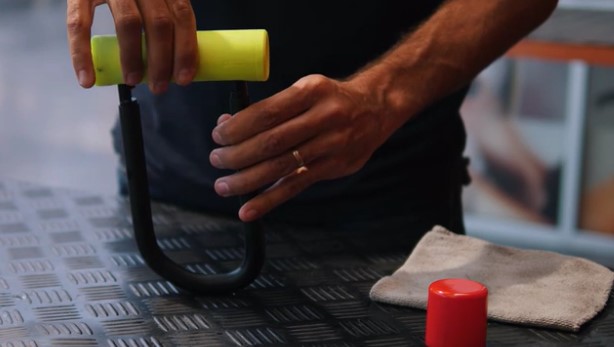
2. Decathlon Elops 900 M D-lock
Specifications
Reasons to buy
Reasons to avoid
✅ You want the lowest priced lock possible
✅ You're also looking for low weight
❌ You want a bike mount included
❌ You want a larger shackle size
If pure value for money is what you want, it is hard to look past the Decathlon 900 M D-Lock. Its 159mm shackle size is a little smaller than some, but that leads to a claimed weight of just 800g, so carrying is that much easier.
Despite the low weight and low price, it is rated silver by Sold Secure – the same as the Hiplock D which is almost three times the price. There are no frills, but frills won't be high on many people's lists when looking for the best budget bike locks. The lock comes with three keys and a two year guarantee. You do need to buy the mount separately, however.
If you're looking to upgrade your setup without overspending, you can find discounts on cycling essentials with our latest Decathlon coupons.
Best portable-yet-secure D-lock
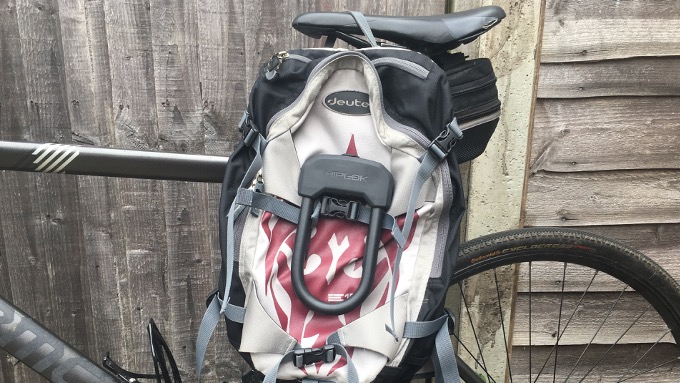
3. Hiplok D
Specifications
Reasons to buy
Reasons to avoid
✅ You are looking for a good balance of security vs weight
✅ You want a long guarantee
❌ You want a larger shackle area
❌ You want to keep the budget low
Away from home (or wherever you store your ride), bike locks come down to a balance of security versus practicality. If it was purely a matter of security, you'd buy the thickest hunk of hardened steel you can afford no matter how much it weighs; if it's pure down to practicality, you'd just 'secure' your bike with a zip-tie and keep half an eye on it (we've got you covered on that front with the Hiplok Z LOK COMBO).
The Hiplok D gives a superb balance of those considerations: it is rated silver by Sold Secure so will satisfy many insurance policies, has a 13mm shackle despite weighing in at under a kilogram and has a built-in clip that allows it to be secured to a bag strap or belt when not in use.
We found it to be a solid piece of kit – Hiplok offers a 10-year 'lifetime' warranty – with a smooth double-bolt locking action and a weatherproof keyhole cover. When we took it out for a ride, we clipped it to our rucksack and it was so secure we soon forgot about it. As you have no doubt ascertained from this guide, we are not big fans of the distinct clatter you get from most D-locks when they are mounted to the bike, so this is an excellent solution. It looks pretty slick too.
It is a little on the small side. While we could just about manage to lock the back wheel to the frame, we couldn't do the same for the front wheel – and you'd struggle to lock the wheel and frame together to a rack or railing, so would have to pair it with another lock to achieve that. It's also at the top end of the budget, so you are paying for convenience (and style) over substance to a certain extent.
Best lighter weight D-lock

4. Abus Ultra Mini 410
Specifications
Reasons to buy
Reasons to avoid
✅ You want a low wight mid-security lock
✅ You're looking for a double-locking D-lock
❌ You want to lock your wheels, not just the frame
❌ You leave your bike in high risk areas
The Abus Ultra Mini is reasonably priced and a decent 80 x 180mm in size despite the Mini in its name. It's silver rated by Sold Secure, so it provides adequate rather than robust security. It's also pretty lightweight at under 800g, so it's not too much of a burden to lug around.
The 12mm double shackle ensures that no one is going to cut the Abus Ultra Mini with wire cutters. You could probably get through it with 36" bolt cutters, and maybe even 30" cutters given the right scenario, but either way that's still a lot more protection than a cable lock will ever give you. Abus uses a quality lock cylinder to help avoid attacks here.
There are also quite a few variants of the Abus 410. The one I’ve included here is the basic Mini 410. It’s too small to lock more than just the frame but it’s less expensive. There are also options that include a cable lock for the front wheel or a bigger space inside the lock. They are all the same 12mm double locking shackle so if this one is too small, pick whatever works for you.
Heavily certified, rattle-free D-lock
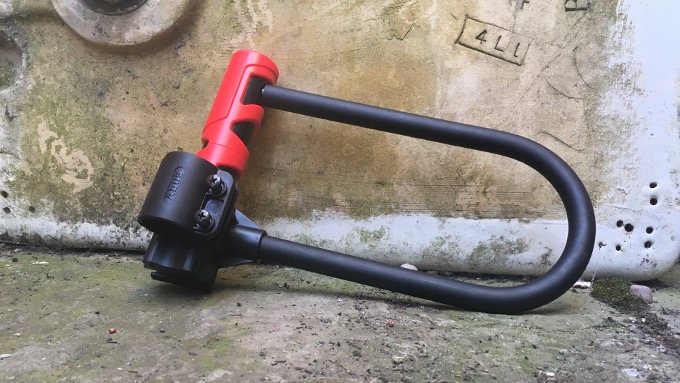
9. Abus Ultimate 420
Specifications
Reasons to buy
Reasons to avoid
✅ You are looking for multiple certifications
✅ You want rattle-free carrying
❌ You want a protected keyhole
❌ You want to keep the cost low
The Abus Ultimate 420 comes with a whole host of certifications. Given a 12 out of 15 security level by the German company, it has been tested and certified in five different countries. It has a gold rating from the UK's Sold Secure and test seals from the SBSC in Sweden, the Varefakta in Denmark and similar bodies in Norway and Finland that are often required by insurance companies. It also has Abus's own ice spray seal to show that it has been tested against attacks in which the lock is cooled down in the hope that it is more susceptible to impacts.
At 13mm, its shackle is a decent thickness – although not as thick as the OnGuard Pitbull or Zefal K-Traz U17 – and it has a double-bolted locking mechanism that is standard on decent-level D-locks.
We found this to be one of the most user-friendly of the locks we tested, with the mechanism easy and the weight reasonable at just over a kilogramme. It does, however, fall down on a lot of the extras you might expect from a lock at the top end of the budget. It does not come with a cable to lock up wheels and there is no protective covering for the keyhole that has become a feature of many D-locks.
Where it did outperform other locks, however, was the rattle test. The mounting bracket is rather bulky but because it requires the lock to be opened and locked through it, it secures it more tightly than any of the other locks we tested – and therefore hugely reduced the amount of rattle when riding while it was mounted on the frame.
Cheapest and lightest gold standard lock
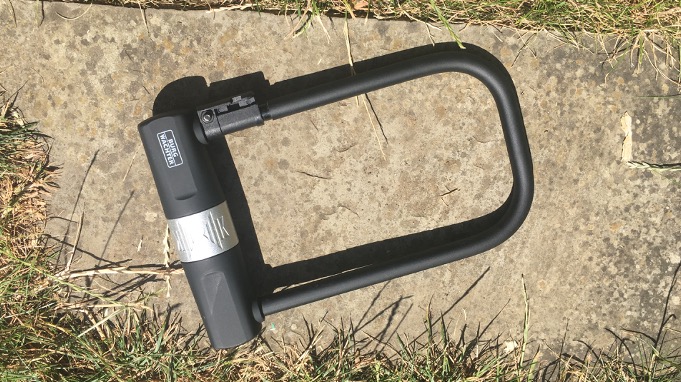
11. Burg Wachter 1580 HB
Specifications
Reasons to buy
Reasons to avoid
✅ You want Sold Secure gold rating
✅ You're looking for smooth locking
❌ You don't like rattles when riding
❌ You're worried about bolt cutter attacks
The Burg Wachter 1050 HB is a heavy-duty D-lock that simply does all the basics well. There are no frills, but it just scores a little bit higher in most departments. It sells at a low price but has a gold Sold Secure rating, which could make the difference on insurance requirements. However, the shackle itself is on the thin side, perhaps making it more vulnerable to bolt cutters.
The locking mechanism itself is spring-loaded, which makes for a much smoother operation, and there is a neat rotating keyhole cover to keep out debris that has a high-quality feel about it.
The mounting bracket to attach the lock to the bike when not in use is basic but we found it easy to fit, and its low profile made it quite attractive to keep on the bike, as opposed to the more clunky offerings that come with the Abus Ultimate 420. The lock itself does, however, rattle when riding while attached to the bike, which we found difficult to put up with.
Perhaps most importantly, the lock weighs in at 1,040g, which puts it only a fraction heavier than the Hiplock D – and the lightest of the Sold Secure gold-rated locks in this test.
No-frills, high-spec lock at cheaper price

12. Zefal K-Traz U17 Cable
Specifications
Reasons to buy
Reasons to avoid
✅ You want quad-bolt locking
✅ You are looking for a larger locking area
❌ You want easy mounting to your bike
❌ You don't like rattles
On many levels, the Zefal K-Traz U17 is one of the superior locks in this guide. In fact, on a purely technical level, it is unsurpassed – but it falls down on its usability.
It shares a lot of the characteristics with the OnGuard Pitbull: it has the same quadruple-bolt locking system with a self-sealing keyhole cover; an equivalent 14mm-thick shackle, although with a larger locking area; and a separate cable to secure the wheels. But it only gets a gold Sold Secure rating compared to the Pitbull's diamond.
It also has exactly the same mounting bracket, but what works really well for the smaller Pitbull is actually a bit of a hindrance for the K-Traz. Locating the mount on the seat tube, we found it impossible to secure the larger lock in place using the twist-to-fit technique without it hitting the seat-tube bottle rack. We therefore had to either remove the bottle rack or position the mounting bracket elsewhere on the bike. The only realistic alternative for us was the seat post – but that was far from ideal as it is where we often mount a bag or fixing for a tagalong on the hybrid bike we were using for the testing.
Even once mounted, the Zefal K-Traz U17 did, unfortunately, have a rattle – which we didn't experience when using the OnGuard Pitbull and Abus Ultimate 420. It is also the heaviest of the Sold Secure gold-rated locks we tested.
That said, if security and cost are higher up your list than usability, it is perhaps the best option here. It will be hard to find a cheaper gold-rated D-lock that comes with a cable.
Reputable brand which ticks almost every box
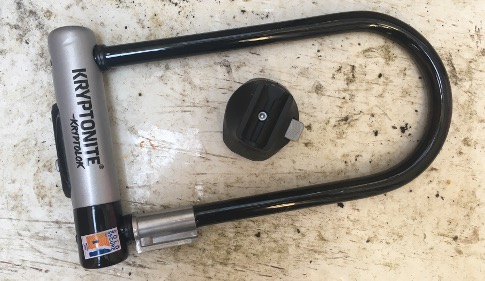
13. Kryptonite KryptoLok Standard
Specifications
Reasons to buy
Reasons to avoid
✅ You want a D-lock plus cable combo
✅ You value the £1,000 anti-theft guarantee
❌ You want to keep the budget low
❌ You are looking for a thicker shackle
We've used Kryptonite locks for many years and they have always carried a strong reputation. Perhaps an indication of their high standards is given by the fact this lock only rates six out of 10 on Kryptonite's own security scale – despite it being gold rated by Sold Secure and stretching our self-imposed budget to the max.
Like the OnGuard Pitbull, the KryptoLok Standard comes with an anti-theft financial guarantee – in this case £1,000 and applicable in Europe rather than US – and Kryptonite also runs a Key Safe programme that offers free replacements for lost keys, as well as a limited lifetime product warranty for the lock.
It comes with a cable to secure wheels and, having owned an earlier version at a similar price point, we were pleased to see a few improvements. Most notable is that it has a double-bolt locking mechanism – which means it would likely need to be cut twice to remove it, while Kryptonite says its disc-style cylinder is both pick and drill resistant. It also now has a dust cover for the keyhole which is opened and closed with a small sliding button.
The mounting bracket remains the same and rivals the Burg Wachter 1580 HB for smarts with its low-profile look. Unlike the Zefal K-Traz U17, the lock slides on to the bracket rather than twists into position, so there are not the same placement problems. In the past, we have found the release mechanism to get a little stiff – which can result in the lock clanging against the frame as it is forced out of the bracket – but this one seems to have a much smoother action, so it may be a glitch that Kryptonite have fixed. The lock itself does, however, have that annoying rattle while riding that may be an issue for some users.
For those who like extra certification, this lock also gets a two-star rating (out of five) from the Dutch ART Foundation and test seal from Denmark's Varefakta.
Worth noting is that its shackle is just 12.7mm thick – only the super-lightweight Ottolock Sidekick is thinner out of the D-locks we tested.
For riders who want lightest possible D-lock
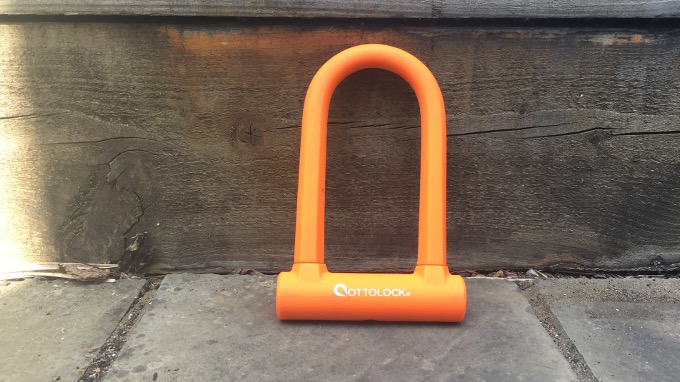
15. Ottolock Sidekick
Specifications
Reasons to buy
Reasons to avoid
✅ You want a low weight D-lock
✅ You want good protection from frame scratches
❌ You're looking for a security rated D-lock
❌ You want a larger locking area
The Ottolock Sidekick is another example of usability trumping security. It is the only D-lock in this guide that doesn't come with a rating from Sold Secure and, at 12mm, has the thinnest shackle – although it should be noted there are Sold Secure-rated locks out there with 12mm shackles.
The trade-off comes with it being among the lightest locks we tested – despite weighing in a fair bit over the claimed weight – 768g rather than the supposed 750g. It also has a thick, soft silicone shell that is going to protect your precious bike frame and any other belongings you might be worried about if you sling it in a bag alongside them. Because that's what appealed to us about this lock. If you want a D-lock you can happily chuck in a backpack or pannier bag knowing it's not going to get in the way or unduly weigh you down, this is worth looking at. We were also drawn to its very garish orange colour that is going to make sure any bike thieves notice it a mile off (it also comes in electric blue or black).
It is small and pretty simplistic, but we found it large enough to secure our bike frame to a post, and it has a double, anti-rotation deadbolt that means a thief can't just cut one side and easily twist it open. It sits in the middle of our budget and is cheaper than the Hiplock D – the nearest equivalent in this guide – although that does have a silver Sold Secure rating.
Ottolock do suggest to pair it with one of their Cinch locks to maximise the security it provides and the company also now has an XL version that is big enough to fix wheel and frame together to a post.
Chain & cable locks
Low priced, low weight cable lock

5. Giant Surelock Tough 1
Specifications
Reasons to buy
Reasons to avoid
✅ You want the portability of a cable lock
✅ You're looking for a low priced option
❌ You want a sub-kilo weight
❌ You are looking for a Sold Secure rated lock
The Giant Surelock Tough 1 is top of the brand's cable lock options, with a 25mm hardened steel cable, but still comes in at a relatively lightweight 1.25kg. It has a reinforced barrel with a double-bolt locking mechanism and includes a mounting bracket.
The lock hasn't been assessed by Sold Secure, so it doesn't have a security rating. As with other cable locks, it's likely to be less secure than a D or chain lock, but has the advantages of easier carrying from its foldable design, lower weight and easier fitting around your bike and chosen anchor point.
Ideal for cafe stops
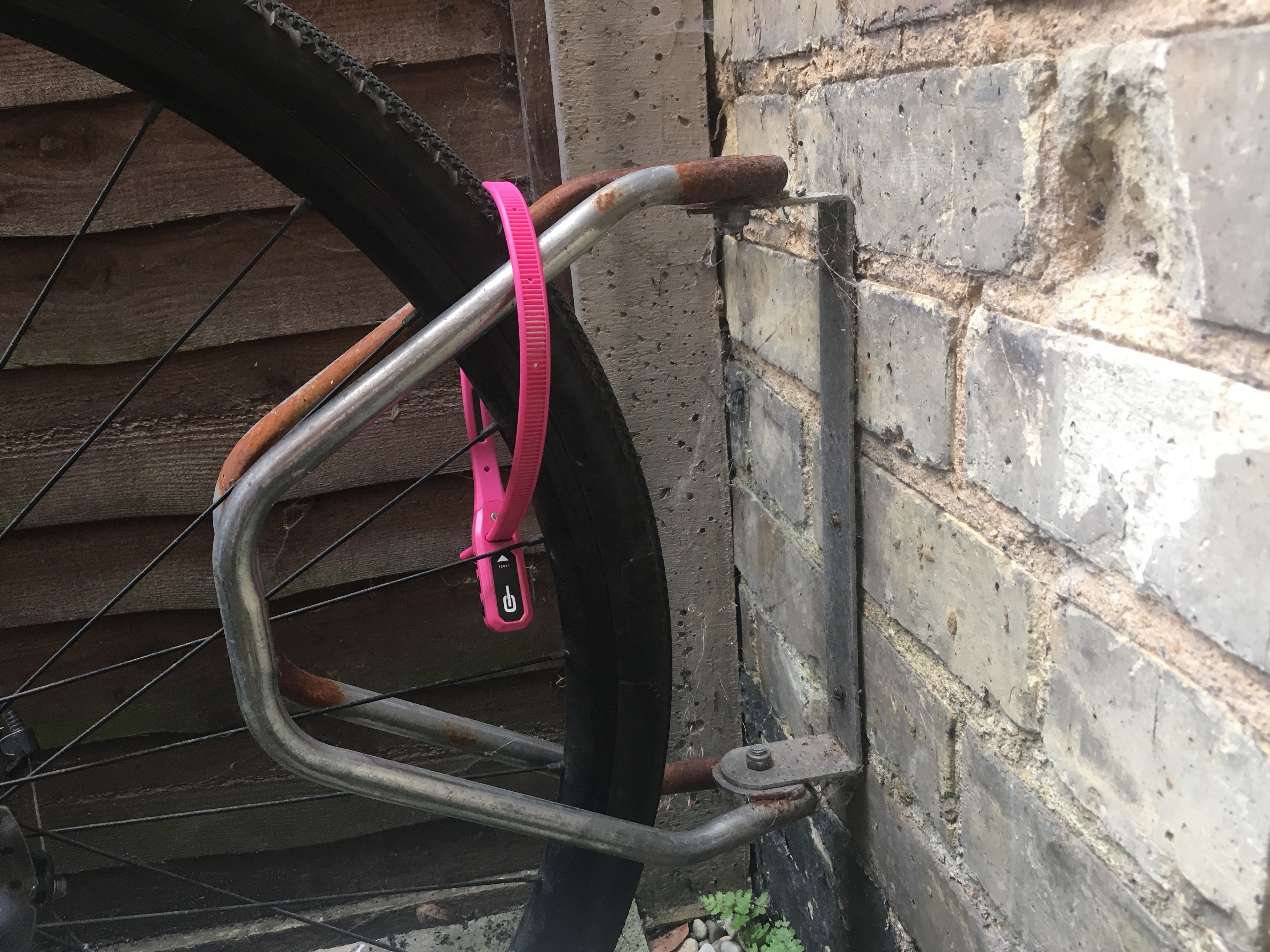
6. Hiplok Z LOK COMBO
Specifications
Reasons to buy
Reasons to avoid
✅ You want a pocketable lock for cafe stops
✅ You want a simple lock for other uses too
❌ You want higher security
❌ You'll find the combination dials fiddly
The Hiplok Z LOK COMBO was inspired by a cyclist who would simply bring a cable tie out on rides and use that to secure his bike. Taking this rudimentary concept, Hiplok – the same company that produces the wearable chain lock we feature here too – developed their Z LOK line, which is basically a reusable cable tie, or zip tie, with a steel core.
The original version uses a key but the Z LOK COMBO adds a combination lock, making it even more hassle-free and the code can be registered online with Hiplok in case you forget it
The security level is minimal. It is designed to deter the opportunists and Hiplok refers to it as a "cafe lock" – for the kind of stops where you won't let your bike out of your sight for more than a moment. The steel core will at least prevent simple knives or scissors from being used to cut it.
You can buy them in multipacks and they have all sorts of useful ancillary uses, such as securing your bike to a car rack, securing your helmet to your bike while stopped, or as a bit of a security padlock alternative for your luggage while bikepacking. Hiplok also makes a minimalist bike rack called the JAW that has been designed to be used in conjunction with a Z LOK.
We found it to be joyously simple to use. Our bright pink Z LOK COMBO (they also come in teal, green, yellow and black) weighed in at exactly 70g and we were happy taking in out on a serious ride stuffed in one of our jersey pockets. The mechanism is so smooth we were able to secure it using one hand and, when you press the release button, it pings open with a satisfying swoosh.
The one issue from a usability point of view is the fact that the combination dials are extremely small, so some people may find them hard to read or fiddly to turn into position.
Easy-to-stash lightweight option
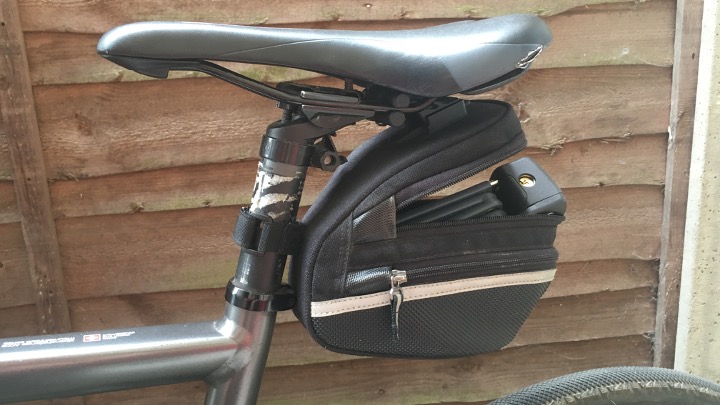
Specifications
Reasons to buy
Reasons to avoid
✅ You want a lightweight lock that's easy to carry
✅ You want more security than a cable lock
❌ You want a Sold Secure rated lock
❌ You want a larger enclosed area than 60cm
Folding locks tend to be more expensive because of their complex design but the Abus Bordo 6055k Lite just about squeezes into our budget.
It offers a lightweight alternative to the D-locks and chain locks in this guide, but with more security than a cable lock. If weight is high on your list of priorities and the Hiplok Z LOK COMBO doesn't offer enough protection for your bike, this might be the half-way house you are looking for.
It is formed from a series of pivoted steel links that fold together into a cuboid-type shape that fits into a jersey pocket or small saddle bag. Abus also sells a separate mounting bracket if you prefer to carry it on the bike frame.
It is not going to stop a determined thief who has all the right tools – the pivots are vulnerable to being pried apart and links themselves are nowhere near as thick as even a chain lock's links, although their flat shape may prevent certain tools from being used.
We found it really easy to use and loved the fact that we could carry it in the usual saddle bag we take out on rides alongside a pump and spare inner tube. It has an automatic cylinder, which mean you don't need to manually lock it with the key – just slide the final link in. The 60mm circumference means it hasn't got the locking capacity of a chain lock, but is similar to the smaller D-locks in this guide – although easier to get into place without searching for awkward angles.
Read our review of the Abus Bordo 6055 Lite to see if it is the lock for you.
Lower weight cable lock with armoured shell
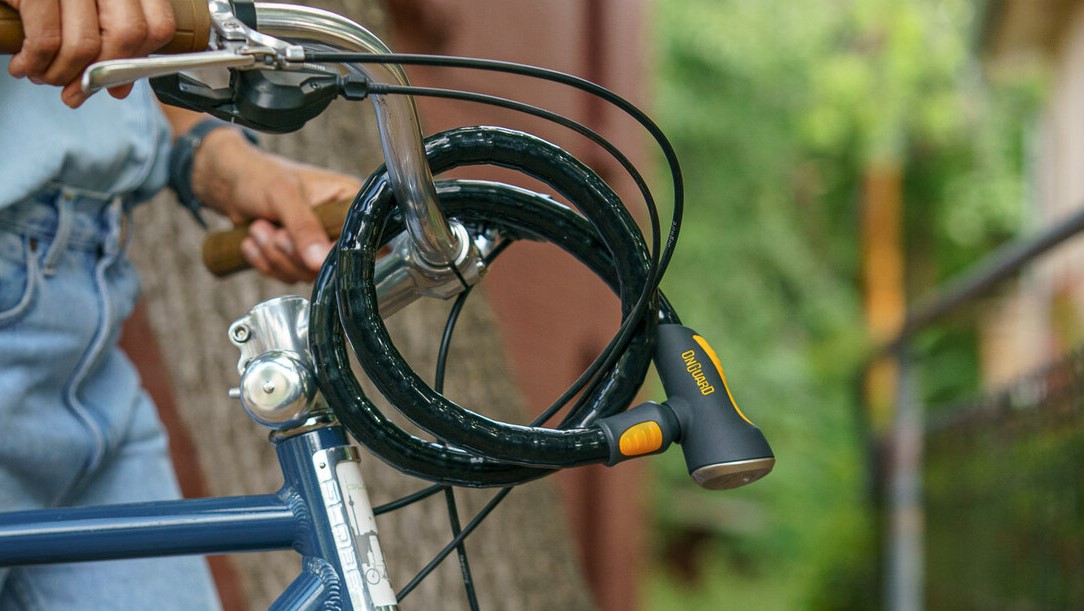
8. Onguard Rottweiler
Specifications
Reasons to buy
Reasons to avoid
✅ You want to secure multiple bikes with one lock
✅ You are content with a Sold Secure bronze rating
❌ You are looking for low weight
❌ You want more protection from thieves
The Onguard Rottweiler cable lock is available in a range of grades. The 25mm diameter cable sits below the thicker 30mm option and there's also a 20mm thickness with a key lock as well as thinner options with combination locks.
The Rottweiler's cable is enclosed in a hardened steel sheath to provide some additional protection from bolt cutters and there's a double bolt locking mechanism. The whole lock has a plastic outer coating to help protect your paintwork.
With two length choices, 1.2m and 1.8m, there's a lot of cable available with the potential to lock up multiple bikes or pass the cable through the wheels and frame and around wider anchor points.
The cable length leads to a hefty lock, with weights up to 2.4kg. Despite the burly build, the Onguard Rottweiler is Sold Secure bronze rated, reflecting the easier cutting of a cable over a hardened chain or D-lock. On the plus side, it's very foldable though, making it easier to carry.
A wearable chain lock
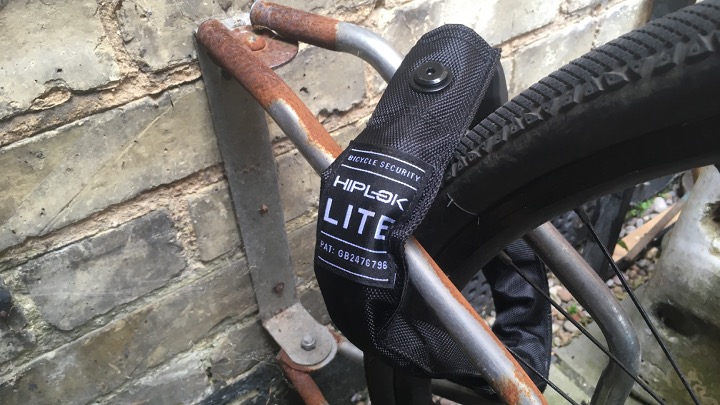
10. Hiploc LITE
Specifications
Reasons to buy
Reasons to avoid
✅ You are looking for a wearable lock
✅ You want a rattle-free chain lock
❌ You want a higher rating than Sold Secure bronze
❌ You don't like fiddly locking
The Hiplok is the result of some out-of-the-box thinking from the UK-based company. Many people prefer to lock their bikes up with chain locks, as D-locks can be fiddly to position. But chain locks tend to be heavier because of the sheer volume of metal involved and no matter how you choose to transport it, you're likely to rattle like you're auditioning for a part in the Muppet Christmas Carol.
Therefore the Hiplok is designed so it can be worn around the waist, like a belt. It sounds a bit of a mad concept but we found it worked quite well. The original version has a silver Sold Secure rating (rather than bronze) but busts our budget and is nearly twice as heavy as the Hiplok LITE. As a result, the links on the LITE version are only 6mm thick, which is 2mm thinner than the Zefal K-Traz M12 Code also included in this guide.
Here's how it works: the padlock doubles up as the belt clasp and stays secured to one end of the chain while a strip of material is threaded through it. This is tightened to fit your waist and secured in place with a long velcro strap. When we took it for a ride, it felt really secure. We aren't going to be taking it up our favourite climbs or entering our next sportive wearing it, but for a simple ride to the pub or a gentle family bike ride, it made sense. The weight of it is still a touch more than a kilogram, so you certainly know it's there and wouldn't want to be doing any serious exercise while wearing it.
We did find when using the chain to secure the bike (rather than hold up our shorts!) it was a bit fiddly to hook the padlock into place around the chain. This was a result of the extra material required for the belt aspect and that it doesn't just automatically lock into place – you have to turn the key to secure it.
However, one of the things we like best about the Hiplok LITE is the way the material has been wrapped around the chain to eliminate almost all of the rattle that usually comes with chain locks. So, coupled with the fact that it's quite light for a chain lock, even if you didn't fancy adding it to your summer wardrobe this would be a great option just to sling in a backpack or pannier bag.
Affordable chain lock with combination system

14. Zefal K-Traz M12 Code
Specifications
Reasons to buy
Reasons to avoid
✅ You want a large locking area
✅ You don't want to risk losing a key
❌ You're looking for a secure rated lock
❌ You want lower weight
There aren't many chain locks in this guide to the best budget bike locks as they tend to be more expensive due to the amount of metal they use. Their design also means that – compared to D-locks – they are more vulnerable to being cut: the thickness of the links is never going to be as thick as a D-lock shackle.
However, we thought the Zefal K-Traz M12 Code was worth including as it does offer excellent value for money. It has a massive 800mm locking area – the biggest of any of the locks in this guide – and the individual links are 8mm thick, which is thicker than the Hiplok LITE (6mm).
Combination locks are often avoided simply because they can be opened without any tools – either by a thief watching you lock up and spying your code or by managing to crack the code. The K-Traz M12 combats that somewhat by having four digits – vastly increasing the number of potential combinations from 720 to 10,000 –and obviously it negates the need to carry a key out with you.
We found the mechanism to be really well designed. The chunky dials have clear numbers and rotate into place with a reassuring click. It was simple to set the code and the pin slides in and out without fuss. The chain is covered with a material to protect the bike frame from scratches and, as expected, the length of the chain made it really easy to lock to just about anything we came across.
It is a heavy lock, although a rare example of weighing in lower than the claimed weight – tipping our scales at 1,243g rather than the 1,250g advertised. So we didn't find it to be the most practical option for taking on rides – the Hiplok LITE's lower weight, unique carrying style and Sold Secure bronze rating making it a better option on that front.
How to choose the best budget bicycle lock
Wondering how to select the best budget bike lock that meets your needs but doesn't cost too much? Here are our answers to the top questions buyers have when choosing the best budget bike locks.
Are cheap bike locks safe?
The best way to answer this question is to say that you should buy the best possible bike lock you can afford. Unfortunately bike theft is a common occurrence and, although it won't guarantee keeping your bike safe, the harder you make it for a thief, the less chance there is of losing your ride.
Our recommendation is to avoid cable locks if you intend to leave your bike unattended. They might stop an opportunist but are vulnerable to even the most basic cutting tools. You can buy a D-lock that is rated gold standard by Sold Secure for less than £20.
Which kind of bike lock is best?
The best types of bike locks are D-locks – also known as U-locks – and chain locks. D-locks are particularly good for cyclists because of the balance they offer between weight and a high level of security with their thick U-shaped shackle. Many also have a double-bolted locking mechanism that means they cannot be easily opened with just one cut – increasing the amount of time it takes for a thief to operate. Cable locks tend to be less effective because they are easy to cut open with basic tools.
How do I theft proof my bike?
You cannot make you bike completely theft proof, but the better you secure it, the less likely it is to be stolen. Consider where you are locking your bike up, the type of lock you are using, and how you are using that lock to secure your bike. Find out more by reading this guide on how to prevent bike theft. It also includes advice on what action to take if your bike has been stolen.
Secured By Design is a UK police initiative that works towards prevention of crime – including bike theft – and has a useful guide on how to protect your bike on its website.
Do locks come with a guarantee?
Some locks come with an anti-theft guarantee, which means the company will pay out up to a stated amount if your bike is stolen because the lock was broken or opened by force – although they are often subject to many conditions and restrictions, such as being locked up correctly or the policy not being valid if torches or power tools are used. Similarly, some companies have 'key safe' schemes that make it easier to order replacement keys, or combination lock registration services in case you forget your code.
Can you measure a lock's effectiveness?
The thickness of the shackle or links is not the only measure of a lock's security, however. They are vulnerable to all manner of attacks from picking and prying to twisting and freezing. As a result, several bodies award certification to locks they have put through testing. In the UK, where Cyclingnews is based, Sold Secure is recognised as a leading testing and certification service and is affiliated to the Home Office and police service. Although not a definitive guide to a lock's security, it is recognised by many insurance companies and we have therefore used this as our main guide to a lock's effectiveness. Some of the locks included have been given seals of approval from other organisations such as Secured By Design, the SBSC in Sweden, the Dutch ART Foundation and Denmark's Varefakta.
Get The Leadout Newsletter
The latest race content, interviews, features, reviews and expert buying guides, direct to your inbox!
Paul has been on two wheels since he was in his teens and he's spent much of the time since writing about bikes and the associated tech. He's a road cyclist at heart but his adventurous curiosity means Paul has been riding gravel since well before it was cool, adapting his cyclo-cross bike to ride all-day off-road epics and putting road kit to the ultimate test along the way. Paul has contributed to Cyclingnews' tech coverage for a few years, helping to maintain the freshness of our buying guides and deals content, as well as writing a number of our voucher code pages.